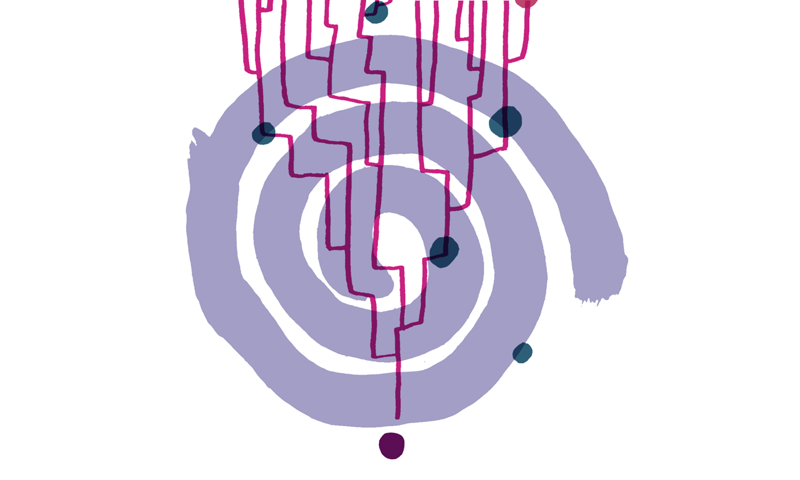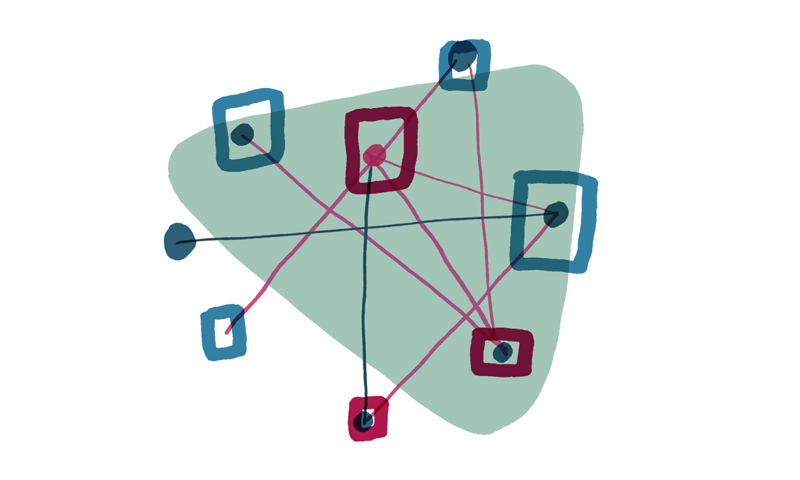5 thoughts on conducting in-depth interviews

In-depth interviews are one of many qualitative tools we use to gain insight into a problem or opportunity, through understanding people's behaviours, experiences and needs.
My favorite part about conducting user research at Made by Many is meeting a wide variety of people from different fields of work. Discussing people's habits, needs and personal experiences is both a privilege and a humbling encounter. The challenge however, is extracting the maximum valuable (and honest) information about the problem you’re trying to solve, in a usually short space of time.
Here are 5 things I find useful for planning and running interviews.
Recruit interviewees with different connections
Think about the wider ecosystem around your problem. Ask yourself who the different players are in the field you’re investigating. Who is directly or indirectly connected? Understanding the problem from various perspectives will help fuel stronger opportunities down the line. This will help select relevant people to interview, as well as designing better interview questions and tasks.

The diagram above helped us map connections and enablers between different players part of School in the Cloud. We started by talking to the people at the centre of the circle before moving outwards.
Smile and be ‘neutrally’ friendly
From the moment you meet your interviewees, remember to put them at ease – it’s important for them not to feel like they’re being assessed in any way. It's a learning exercise for the interview team, and that should be made clear. Set the scene without inflicting your personal views of the problem on to the person. And being friendly doesn’t mean you have to be talking all the time! Good listening and observing are key skills during interviews – you’re there to gain first hand knowledge, by hearing what someone has to say, not saying what they want to hear.
Start with easy questions, and a story arc will emerge
Ease into the topic you're investigating with simple questions, such as "How did you first come across this community?” then move onto more open questions, for example: “Can you describe how you solved that problem?” Open questions help identify wider connections and dependencies. Towards the end of the interview, you might want to focus on more closed questions, such as: “Was that what you expected to happen?” Often the open questions help trigger what I like to call the 'story climax', when reasoning and triggers for particular challenges are revealed.
Try drawing as communications tool
Having a good discussion guide for your interviews is essential. However anticipating any conversation points which might prove difficult to tackle should also be thought ahead.
Asking interviewees to expand on a topic in the form of a sketch or activity can be useful stimulus into deeper conversations around sensitive or unclear subject areas. These help extract unexpected learnings through provoking different thought processes.

Above is a blank sketch template we used to discuss the cancer journey with patients we met whilst developing Macmillan Connected. Our aim was to gain better understanding into patients communication patterns throughout their journey, and where there were any gaps. We asked interviewees how they’d describe their different cancer journey stages, and who/what they used to communicate at different points. The diagram was very useful as a catalyst to other conversations, such as recalling challenging experiences from the past, which in turn had shaped certain decisions.

In the instance above, we asked our interviewee, NANA cafe founder Katie Harris, to map out and describe important events and visions for NANA. From 5 years ago, up until the present moment, and the following five years. This exercise is useful to help understand how interviewees past and present experiences shaped their future thinking.
Highlight any interesting emotions, actions and quotes on the fly
Good interview listeners identify and remember key behaviours. But if you’re audio recording the interview, take note of the time code when something of this relevance was said by the interviewee, or draw a star next to it. The key thing to think about here is facilitating efficient analysis post interview, when you’re debriefing, and looking to identify challenges or unmet needs. It might also be useful for going back during the interview as a fall back to prompt further discussion if needed.
To conclude, five things to help make interviews time efficient and valuable:
- 1 - Recruit interviewees with different connections;
- 2 - Smile and be ‘neutrally’ friendly;
- 3 - Start with easy questions, and an arc will emerge;
- 4 - Try drawing as communications tool;
- 5 - Highlight any interesting emotions, actions and quotes on the fly.
The next step, and one of the most important ones, is synthesising and analysing your findings following the interviews. I’ll cover that in my next post.
Continue reading
Could coding in the curriculum improve the tech industry's gender problem?
With the start of the coming school year kids in the UK from age 5 and up will have coding as a standard part of the curriculum. For the tech industry thi...
MxM TimeOut 2
Check out all the cool things that are on our radar this week without having to hack our inboxes. This week we're discussing what it means to be a respons...
Why we shouldn’t ‘fetishise’ customer development
We’ve been reconsidering what words to use when describing Made by Many. Making sure we say the right things for the right reasons - and of course for the...


